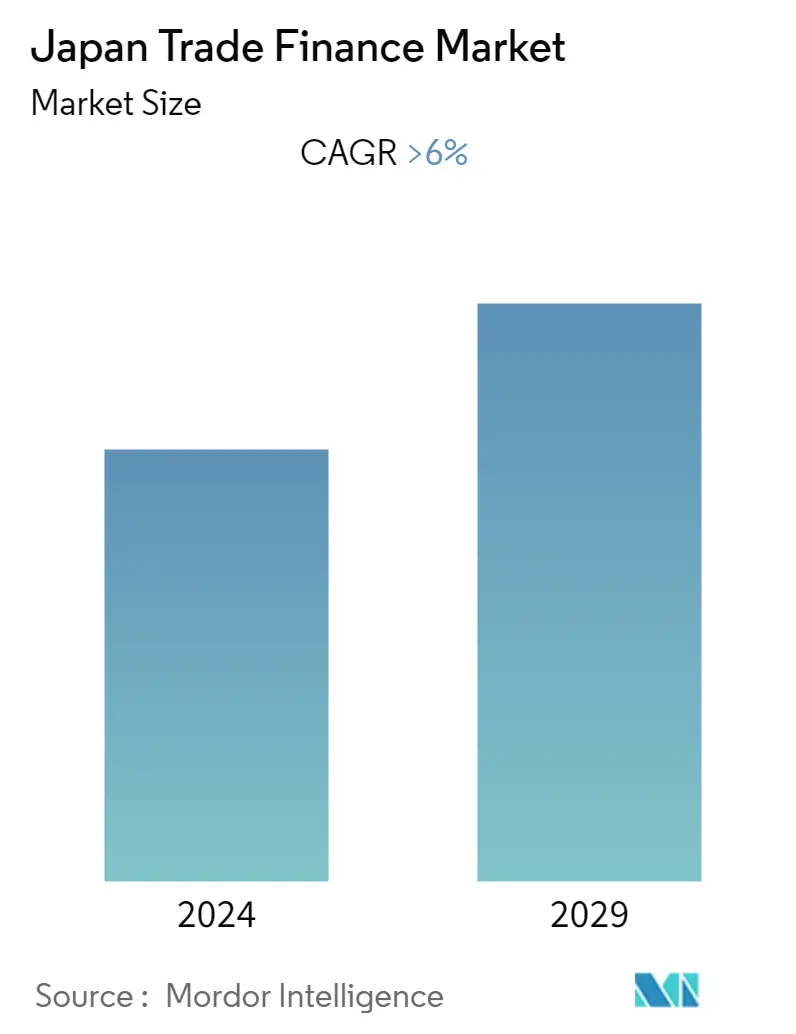Market Size of Japan Trade Finance Industry

| Study Period | 2020 - 2029 |
| Base Year For Estimation | 2023 |
| Forecast Data Period | 2024 - 2029 |
| Historical Data Period | 2020 - 2022 |
| CAGR | > 6.00 % |
| Market Concentration | Medium |
Major Players_-_Copy.webp)
*Disclaimer: Major Players sorted in no particular order |
Need a report that reflects how COVID-19 has impacted this market and its growth?
Japan Trade Finance Market Analysis
The Japan trade finance market is poised to register a CAGR greater than 6% by the forecasted period. The financing of goods or services in a trade or transaction, from a supplier to the final buyer, is known as trade finance. It contributes 3% of the USD 3 trillion in annual world trade. An importer or exporter can employ a broad category of financial instruments called "trade finance." These consist of finance for purchase orders, stock trading, finance for structured commodities, account finance (discounting & factoring), chain supply finance, letters of credit, and bonds and guarantees.
Regarding trade financing, the phrases import finance and export finance are interchangeable. By acquiring the capital needed to buy inventory and goods, trade finance helps businesses expand. Any business's success depends on effectively managing its cash and working capital. Trade finance is a tool to add financing options based on a company's trade cycles or release cash from current stock or receivables. By minimizing payment lags in your trade cycle, a trade finance facility may enable you to provide more favorable terms to both suppliers and customers. Relationships throughout the supply chain benefit, as does the expansion.
Both imports and exports of products were impacted by the COVID-19 epidemic in Japan. The stay-at-home order reduced the shopping options, which lowered the demand on the supply side. A further reduction in aggregated demand resulted from the decline in sales brought on by workplace closures. The consumption of goods and imports declined as a result of these reductions. COVID-19, on the other hand, raises demand for foods, pharmaceuticals, and items for personal protection like masks and sanitary supplies.
Additionally, it raised the demand for goods related to teleworking and stay-at-home jobs (e.g., laptop computers). On the export front, business operations were halted by workplace closures, which caused production activities to be put on hold. Implementing infection control measures (such as social distance) in factories also decreased productivity. These elements caused production output to decline, which lowered the exports.
Decision-makers determine the best approach to use different financial tools to stem various methods for accelerating growth and lowering risks when market dynamics affect supply and demand curves.
